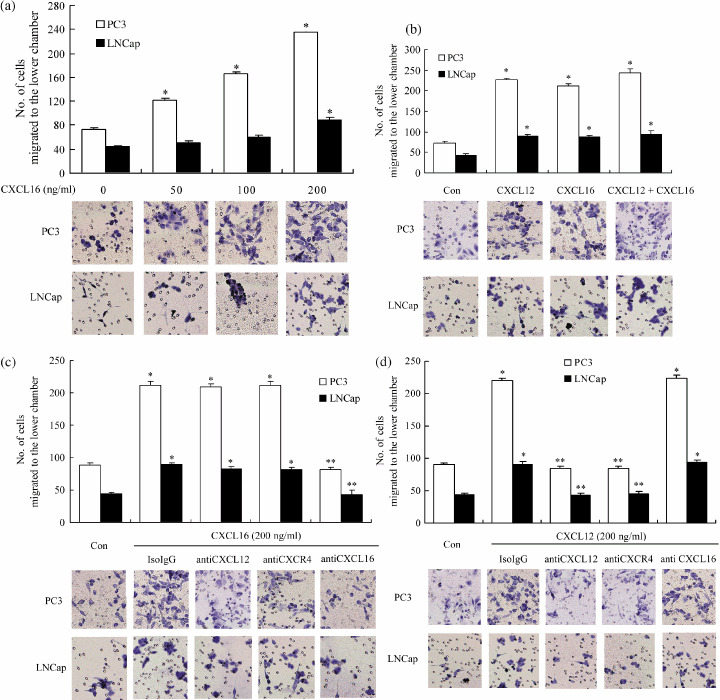Figure 6.

CXCL16 promoted the invasion of human PCa cell lines independent of the CXCL12–CXCR4 axis. A Matrigel invasion assay was carried out to assess the invasive ability of PC3 and LNCap cells stimulated by CXCL16 and CXCL12. The number of cells that migrated to the lower chambers was counted to represent the invasiveness of PCa cell lines and the images are representative of the experiments. (a) CXCL16 promoted the invasion of PC3 in a dose‐dependent manner and the invasion of LNCap cells was increased significantly when the concentration of CXCL16 was raised to 200 ng/mL. (b) Combined addition of CXCL16 (200 ng/mL) and CXCL12 (200 ng/mL) had a similar stimulatory effect on the invasive ability of PC3 and LNCap cells compared with either CXCL16 (200 ng/mL) or CXCL12 (200 ng/mL) treatment alone. (c) Neutralizing antibodies to CXCL12 (50 µg/mL) and CXCR4 (20 µg/mL) were unable to change the increased invasion induced by CXCL16, and (d) addition of neutralizing antibody to CXCL16 (30 µg/mL) could not change the stimulatory effect of CXCL12. (c,d) Similar results were observed in both PC3 and LNCap cells. *P < 0.01 compared to the vehicle control. **P < 0.01 compared to the CXCL6 alone or CXCL12 alone treatment groups. The results were highly reproducible in four independent experiments. Error bars depict the standard error of the mean. Magnification, ×200.
